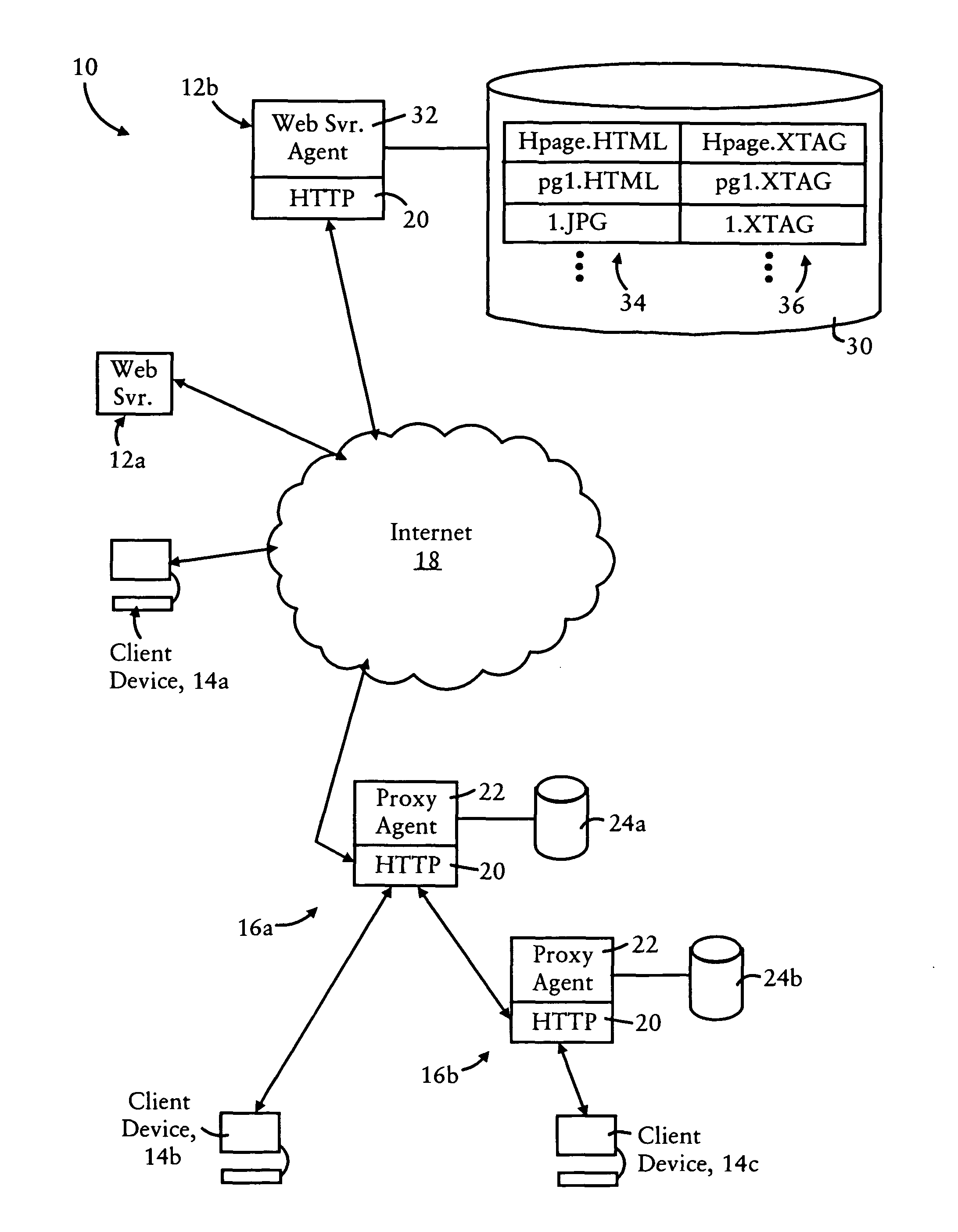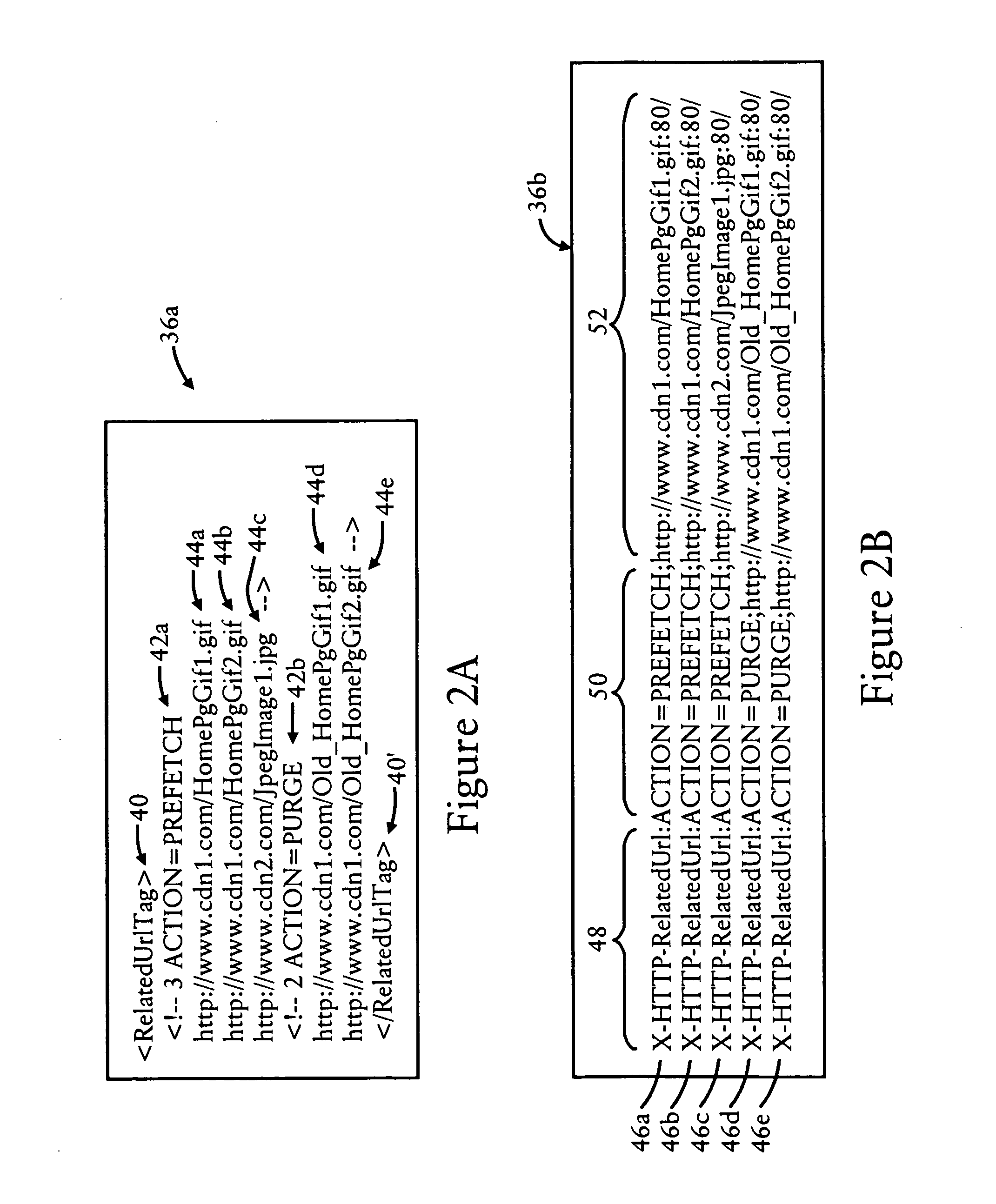Arrangement for providing content operation identifiers with a specified HTTP object for acceleration of relevant content operations
a content operation and content object technology, applied in the field of cache systems, can solve the problems that the client device cannot enjoy the benefits of proxy caching and the performance degradation of the client browser, and achieve the effect of reducing the latencies encountered
- Summary
- Abstract
- Description
- Claims
- Application Information
AI Technical Summary
Benefits of technology
Problems solved by technology
Method used
Image
Examples
Embodiment Construction
[0019]FIG. 1 is a block diagram illustrating a network based system 10 configured for providing HTTP based content using proxy devices configured for executing accelerated content operations using content operation identifiers, according to an embodiment of the present invention. The system includes web servers 12 configured for supplying content objects (e.g., HTML based web pages, graphic media files, audio media files, video media files, etc.). The web servers 12 are configured for outputting the web content as a response to a request, for example an HTTP Get request from an identified destination.
[0020]The system 10 also includes client devices 14 configured for generating the HTTP Get requests based on user inputs, and proxy devices 16 configured for providing accelerated content operations based on caching relevant web documents, described below. The system also includes an open protocol wide area network 18 configured for transporting the HTTP requests and responses between t...
PUM
 Login to View More
Login to View More Abstract
Description
Claims
Application Information
 Login to View More
Login to View More - R&D
- Intellectual Property
- Life Sciences
- Materials
- Tech Scout
- Unparalleled Data Quality
- Higher Quality Content
- 60% Fewer Hallucinations
Browse by: Latest US Patents, China's latest patents, Technical Efficacy Thesaurus, Application Domain, Technology Topic, Popular Technical Reports.
© 2025 PatSnap. All rights reserved.Legal|Privacy policy|Modern Slavery Act Transparency Statement|Sitemap|About US| Contact US: help@patsnap.com



